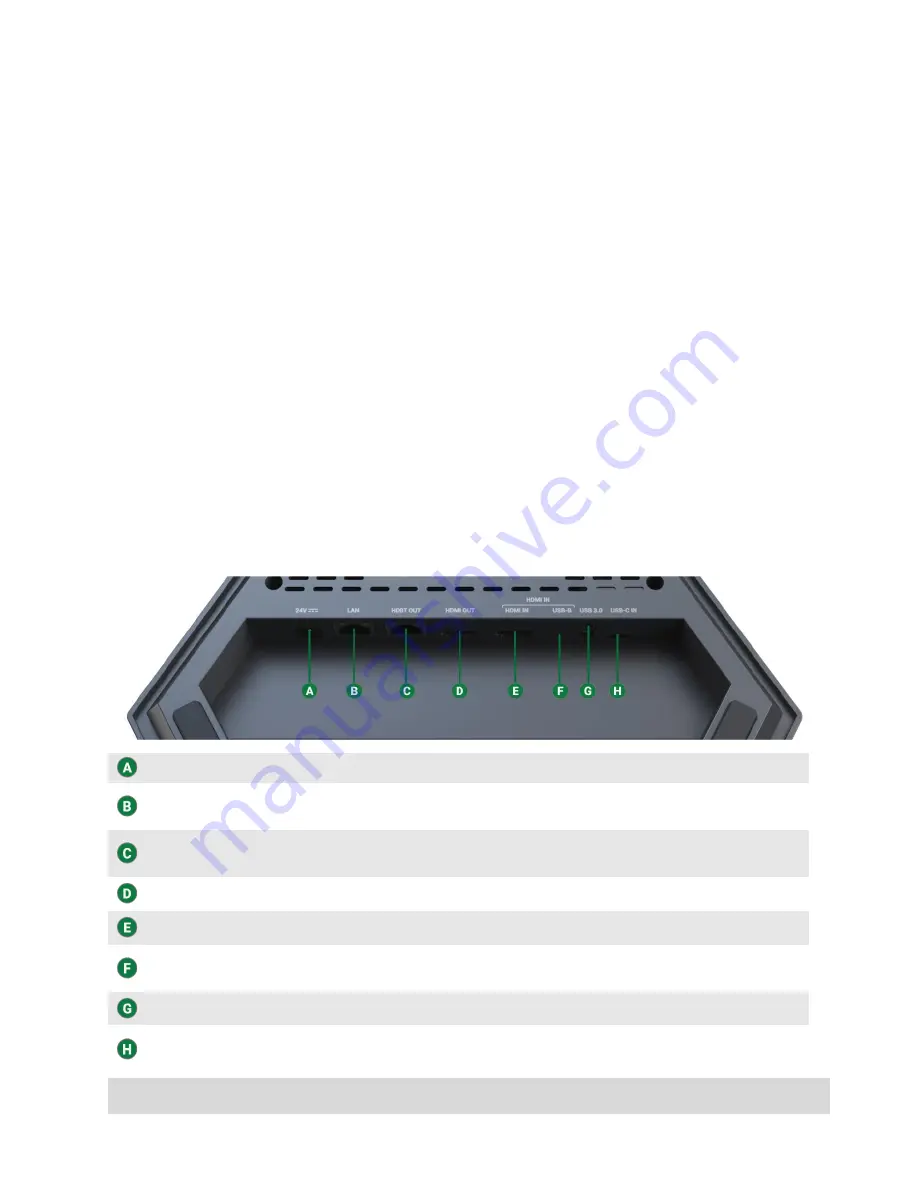
Copyright © 2021 WyreStorm Technologies |
WyreStorm.com
Apollo User Manual | 210622
3 of 10
Technical Support: 844.280.WYRE (9973)
Overview
This user manual provides a detailed overview of the Apollo APO-200-UC & APO-210-UC products.
WyreStorm recommends reading through this document in its entirety before designing or installing a
system.
Device Connectivity
When a user is ready to present, there are a number of connection methods that are available. Apollo
supports both wired and wireless video passthrough. If using wireless
screensharing, a user’s personal
device will not have access to Apollo’s built
-in speakerphone or any USB peripherals. Connecting to Apollo
via Airplay (Apple devices) or Miracast (Windows & Android) is for screensharing content only.
Wired connections add the ability for data communication on top of video transmissions. A hardwired USB-
C connection to a personal device allows both A/V and USB data to transmit over a single cable. This will
allow compatible USB-C devices to share content to a conference display while at the same time having
access to Apollo’s built
-in speakerphone and any USB peripherals devices such as a webcam.
The supplied USB-C cable also includes a tethered USB-C to USB-A converter which uses DisplayLink
technology. DisplayLink allows devices without USB-C connections to still utilize a single cable to send A/V
and USB data with active conversion, video output is limited to 1080p with DisplayLink.
A native HDMI connection is also available and can be used for simple video passthrough to a display. If
USB data communication is also needed to a device which is using HDMI, a separate USB 2.0 Type A
connection can be used in tandem to connect the Apollo’s speakerphone and peripheral USB devices.
DC Power
Connects to the provided 24V DC PSU
LAN
Connect to a local network for access to the web interface, API and for
wireless casting
HDBT Out
Output for connecting to compatible HDBaseT receiver such as the RX-
500 (only available on APO-210-UC)
HDMI Out
HDMI Output (mirrored to the HDBT out)
HDMI In
HDMI input for connecting BYOD computer
USB-B Host
USB 2.0 Host connection for access to Apollo’s speakerphone and any
devices connected to the USB 3.0 Device port
USB 3.0 Device Port
Connect USB peripheral devices such as a conference camera
USB-C In
Multi-purpose port for both A/V and access to Apollo
’s speakerphone and
USB peripherals




























